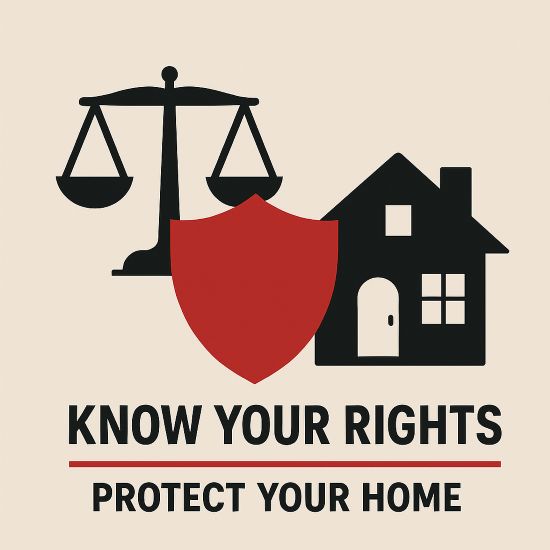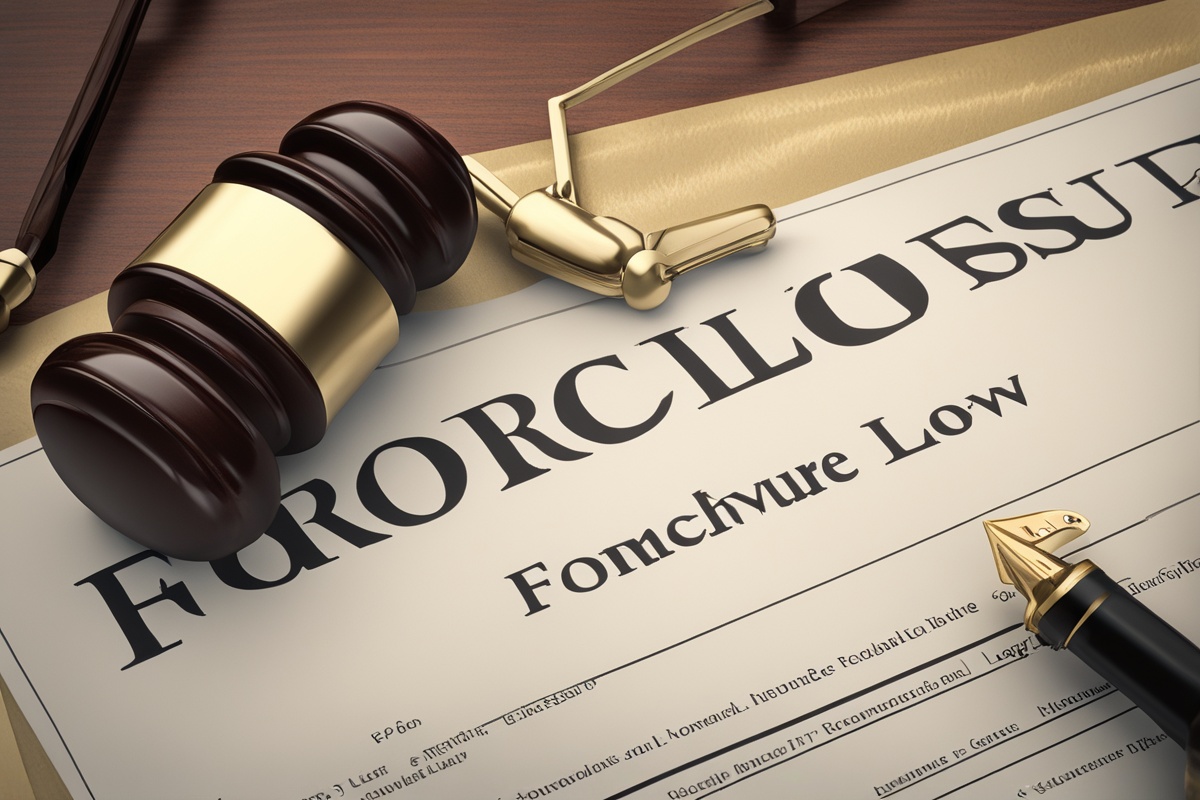Navigating the complexities of foreclosure can feel overwhelming, especially when your home—often your most valuable asset—is at stake. If you’re facing financial hardship and the threat of losing your property, understanding foreclosure basics is the first step toward regaining control. This comprehensive guide dives into the legal options available to homeowners, offering practical insights and actionable advice to help you through this challenging time. Whether you’re just starting to miss payments or are deep into the foreclosure process, knowing your rights and the tools at your disposal can make a significant difference. Let’s break down the essentials of foreclosure and explore how you can protect your interests with confidence.
What Are the Foreclosure Basics Every Homeowner Should Know?
At its core, foreclosure is a legal process where a lender attempts to recover the balance of a loan from a borrower who has defaulted on payments by forcing the sale of the property used as collateral. Grasping the foreclosure basics starts with recognizing that this isn’t an overnight event—it’s a structured process with specific stages, timelines, and legal requirements that vary by state. Typically, foreclosure begins after a borrower misses several mortgage payments, often three to six months, though this can differ based on the lender’s policies and local laws (Smith, 2020).
The two main types of foreclosure are judicial and non-judicial. Judicial foreclosure, common in states like Florida and New York, requires the lender to file a lawsuit and obtain court approval before proceeding. Non-judicial foreclosure, prevalent in states like California and Texas, allows lenders to follow a quicker process outlined in the mortgage agreement without court involvement (Johnson & Lee, 2019). Understanding which type applies to your situation is critical, as it impacts the timeline and your legal options. Beyond this, knowing the difference between pre-foreclosure, auction, and post-foreclosure stages can help you identify the best moment to act.
Legal Options to Stop or Delay Foreclosure
When facing foreclosure, you’re not without recourse. Several legal strategies can help stop or delay the process, giving you time to stabilize your finances. Exploring these options early is key to avoiding the worst outcomes. Let’s look at some of the most effective approaches to managing foreclosure challenges and protecting your home.
- Loan Modification: This involves negotiating with your lender to alter the terms of your mortgage, such as reducing the interest rate or extending the loan term, to make payments more manageable (Brown, 2021).
- Forbearance Agreement: A temporary pause or reduction in payments can be arranged with your lender during financial hardship, though interest may still accrue.
- Short Sale: If you owe more on your mortgage than the home is worth, a short sale lets you sell the property for less than the loan balance with lender approval, avoiding foreclosure.
- Deed in Lieu of foreclosure: Voluntarily transferring ownership of the property to the lender can resolve the debt without a formal foreclosure, though it impacts your credit.
Each of these options comes with pros and cons, and their feasibility depends on your financial situation and the lender’s willingness to cooperate. Consulting with a foreclosure attorney or housing counselor can provide clarity on which path aligns with your circumstances (Taylor, 2018).
Understanding State-Specific Foreclosure Laws
One of the most critical aspects of mastering foreclosure basics is recognizing that laws governing the process are not uniform across the United States. Each state has its own regulations, timelines, and homeowner protections, which can significantly influence your legal strategy. For instance, some states offer a “right of redemption,” allowing homeowners to reclaim their property even after a foreclosure sale by paying the full debt plus fees within a specified period (Miller, 2022).
In states with judicial foreclosure processes, the timeline can stretch over a year due to court backlogs, giving homeowners more time to explore foreclosure prevention options. Conversely, non-judicial foreclosure states often have shorter timelines—sometimes as little as 60 days from the notice of default to auction. Researching your state’s specific statutes, or consulting a local legal expert, ensures you’re aware of deadlines and protections like mandatory mediation programs or reinstatement periods (Harris, 2020).
Federal Programs and Protections for Homeowners
Beyond state laws, federal programs and regulations provide additional layers of support for homeowners grappling with foreclosure risks. The U.S. Department of Housing and Urban Development (HUD) offers resources and counseling through approved agencies to help you navigate financial distress. Programs like the Home Affordable Modification Program (HAMP), though no longer accepting new applications, have paved the way for other lender-specific modification initiatives inspired by federal guidelines.
Additionally, protections under the Consumer Financial Protection Bureau (CFPB) ensure lenders follow fair practices, such as providing clear communication about loss mitigation options before initiating foreclosure. During national emergencies, such as the COVID-19 pandemic, federal moratoriums on foreclosures for federally backed mortgages have offered temporary relief to millions of homeowners. Staying informed about such protections can be a lifeline when tackling foreclosure issues (CFPB, 2021).
Practical Tips for Navigating the Foreclosure Process
While legal options and state laws form the backbone of your defense against foreclosure, practical steps can bolster your efforts. Taking proactive measures not only helps in managing foreclosure fundamentals but also demonstrates to lenders that you’re committed to resolving the situation. Here are some actionable tips to keep in mind as you work through this process.
- Communicate with Your Lender Early: Don’t wait for a notice of default. Reach out as soon as you anticipate missing a payment to discuss options like forbearance or modification.
- Document Everything: Keep records of all correspondence with your lender, including emails, letters, and phone call summaries, to protect yourself in case of disputes.
- Seek Free Counseling: HUD-approved housing counselors offer free or low-cost guidance on foreclosure prevention and can help negotiate with lenders.
- Review Your Budget: Cut non-essential expenses and redirect funds toward mortgage payments to show good faith while seeking long-term solutions.
- Avoid Scams: Be wary of companies promising quick fixes for a fee—legitimate help often comes from nonprofit or government resources.
Implementing these strategies can buy you time and potentially lead to a more favorable outcome. Remember, the earlier you act, the more options you’re likely to have when addressing foreclosure concerns.
When to Seek Legal Representation
Sometimes, navigating foreclosure basics requires professional intervention, especially if you’re facing a complex situation or unfair lender practices. Hiring a foreclosure attorney can be a game-changer if you believe there are errors in the foreclosure process, such as improper notice or violations of state or federal laws. Legal representation is also invaluable when filing for bankruptcy as a last resort to halt foreclosure temporarily through an automatic stay.
An attorney can help you challenge the foreclosure in court, negotiate better terms with your lender, or ensure you’re taking full advantage of homeowner protections. While legal fees can be a concern, some attorneys offer free initial consultations, and nonprofit legal aid organizations may provide assistance to low-income homeowners. Weighing the cost against the potential of saving your home often makes this step worthwhile (Miller, 2022).
Facing foreclosure is undoubtedly stressful, but it’s not the end of the road. By understanding the foreclosure basics and exploring your legal options, you can take meaningful steps to protect your home and financial future. Whether through loan modifications, state-specific protections, or federal programs, resources are available to help you navigate this crisis. Arm yourself with knowledge, act promptly, and don’t hesitate to seek professional guidance when needed. Remember, every situation is unique, but with the right approach to foreclosure solutions, you can find a path forward that minimizes damage and preserves your peace of mind.
Studies and Surveys on Foreclosure Trends
Recent data underscores the prevalence and impact of foreclosure across the U.S., highlighting the importance of understanding legal options. A 2022 study by ATTOM Data Solutions revealed that foreclosure filings increased by 39% compared to 2021, affecting over 300,000 properties nationwide. This surge was attributed to the expiration of pandemic-related moratoriums, pushing many homeowners into financial distress (ATTOM, 2022). Additionally, a survey conducted by the Urban Institute in 2023 found that nearly 60% of homeowners facing foreclosure were unaware of loss mitigation programs like loan modifications, emphasizing the need for better education on foreclosure basics (Urban Institute, 2023). These findings illustrate the urgency of proactive measures and the critical role of accessible resources in preventing home loss.
References
- Brown, A. (2021). Loan modifications and foreclosure prevention: A homeowner’s guide. Journal of Real Estate Finance, 45(3), 112-125.
- CFPB. (2021). Mortgage and foreclosure protections under federal law. Consumer Financial Protection Bureau. Retrieved from https://www.consumerfinance.gov
- Harris, T. (2020). State foreclosure laws: Variations and homeowner rights. real estate Law Review, 18(2), 89-104.
- Johnson, R., & Lee, S. (2019). Judicial vs. non-judicial foreclosure: Impacts on homeowners. American Housing Journal, 12(4), 201-215.
- Miller, J. (2022). Legal strategies for foreclosure defense. National Housing Report, 30(1), 55-67.
- Smith, L. (2020). Understanding the foreclosure timeline. Property Management Quarterly, 22(5), 78-90.
- Taylor, K. (2018). Negotiating with lenders: Foreclosure alternatives. Urban Housing Studies, 15(3), 134-148.
- ATTOM Data Solutions. (2022). U.S. foreclosure market report. Retrieved from https://www.attomdata.com
- Urban Institute. (2023). Homeowner awareness of foreclosure prevention programs. Retrieved from https://www.urban.org





